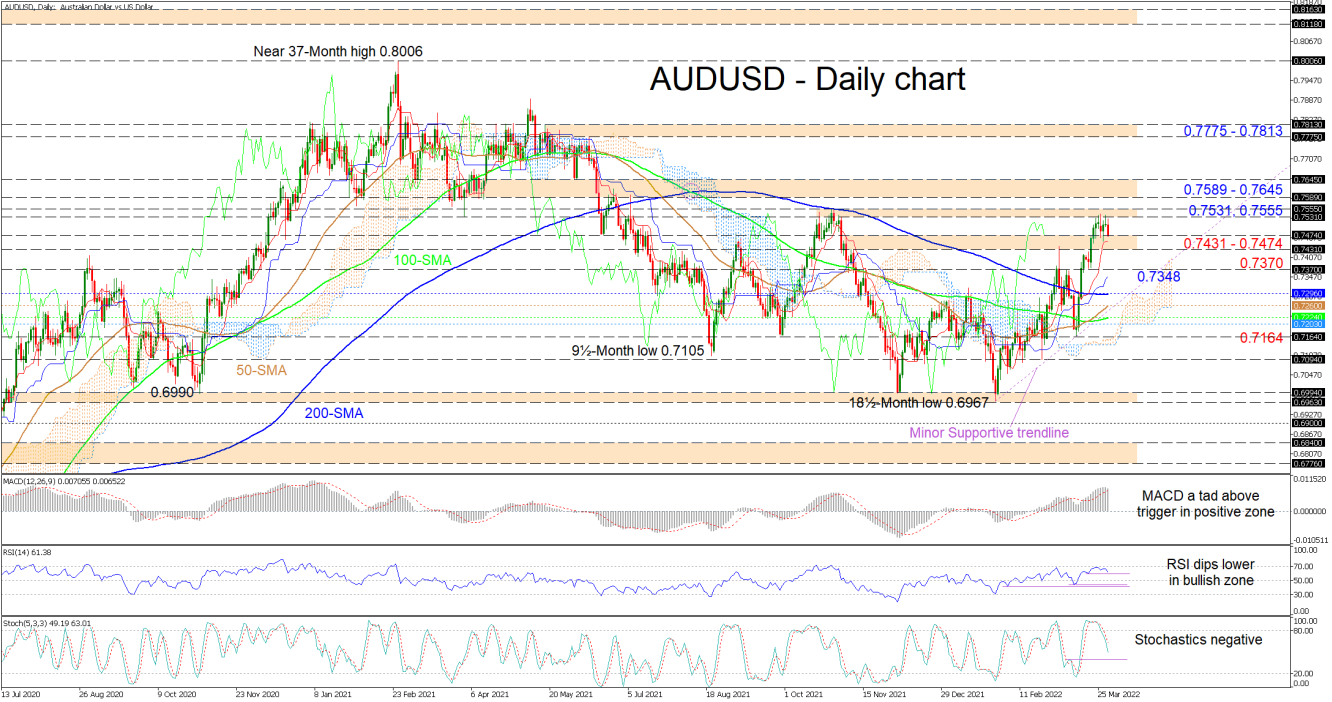The steadier 200-day simple moving average (SMA) and the upturn in the slopes of the 50- and 100-day SMAs indicate that the minor uptrend, which began from the 18½-month low of 0.6967, is gradually pacing higher.
Meanwhile, the Ichimoku lines suggest positive forces are active, while the short-term oscillators reflect the latest dwindling in positive momentum. The MACD, far north of the zero mark, is easing towards its red trigger line, while the RSI is fading in the bullish region. Furthermore, the negatively charged stochastic oscillator is endorsing extra weakening in the pair.
If buyers manage to mould a foothold within the 0.7431-0.7474 zone, resistance could originate from the recently tested resistance area shaped by the October 2021 highs of 0.7531 and 0.7555 respectively. Stretching past this obstacle, the bulls may then challenge the 0.7589-0.7645 resistance border that extends back to April 2021. Overcoming these boundaries could boost optimism in the pair, cheering buyers to aim for the 0.7775-0.7813 section of highs linked to the mid-May until mid-June 2021 period.
On the other hand, if positive pressures continue to wane and the price slides below the 0.7431-0.7474 support, the next level to defend the uptrend could be the 0.7370 low. However, if downside pressures prevail, the blue Kijun-sen line at 0.7348 may try to delay the test of the 200-day SMA at 0.7296, adjacent to a possible supportive trend line pulled from the 0.6967 low. From here, the bears may struggle to overpower the support section from the 50-day SMA at 0.7260 until the Ichimoku cloud’s floor at 0.7203. That said, if sellers overpower this fortified area, the 0.7164 trough could come under attack.
Summarizing, AUDUSD is exhibiting a sturdy bullish bearing above the 0.7370 trough and the SMAs. Upside momentum may ramp up with a climb in the price beyond the 0.7589-0.7645 barrier, while an initial dive below the 0.7431-0.7474 support, could trigger concerns whether the March 15 trough of 0.7164 would stand steadfast against a deeper retracement in the pair.


